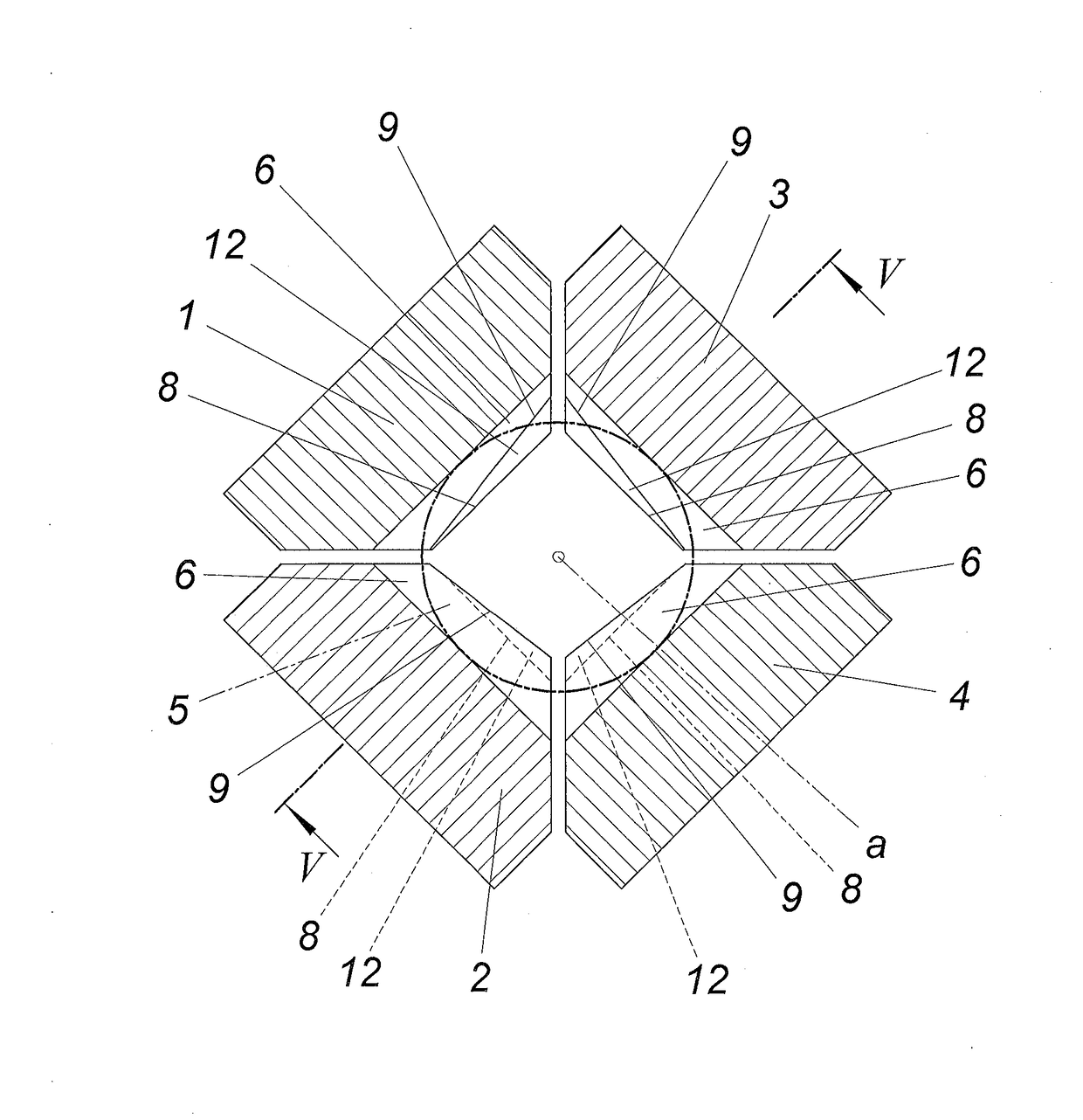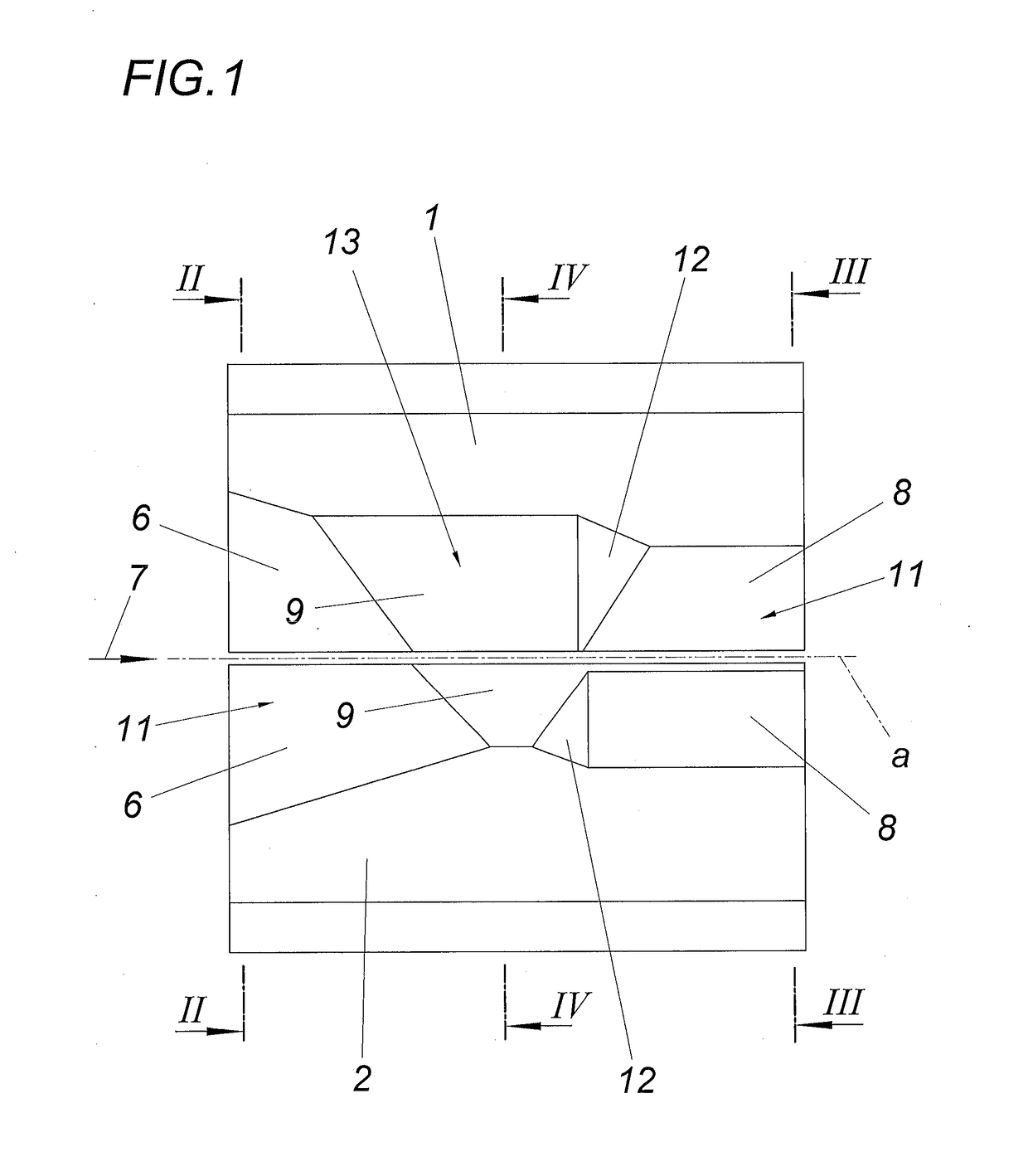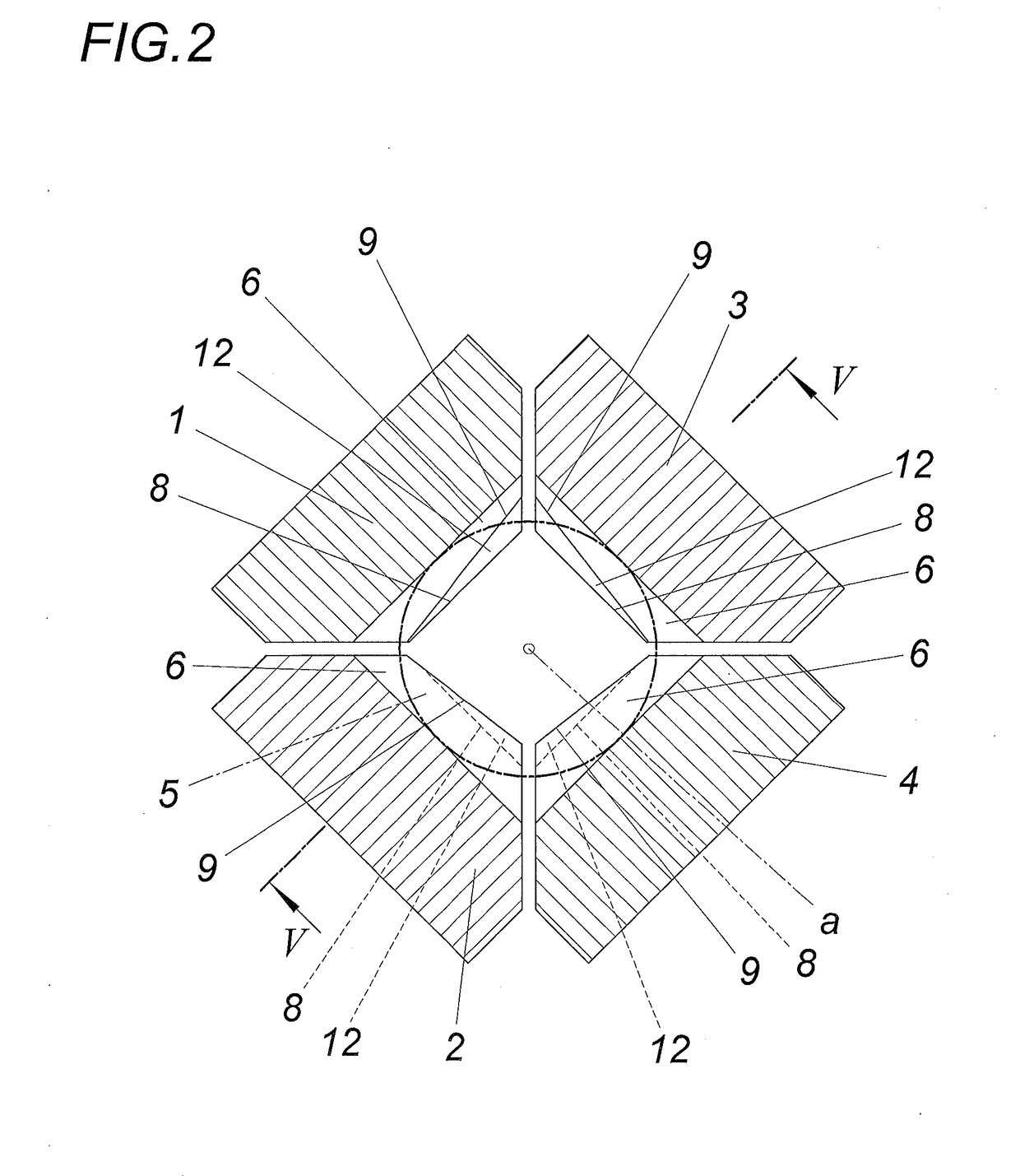Method and device for forging a workpiece in bar form
- Summary
- Abstract
- Description
- Claims
- Application Information
AI Technical Summary
Benefits of technology
Problems solved by technology
Method used
Image
Examples
Example
WAY OF IMPLEMENTING THE INVENTION
[0019]Of the forging device constructed in a known manner, only the four forging tools 1, 2, 3, 4 are shown in the illustrated exemplary embodiment, said forging tools being arranged in pairs opposite one another and being able to be acted upon radially in relation to a forging axis a, the setting shown forming the mould cavity for a rod-shaped workpiece 5 that is indicated in dash-dotted line. Said forging tools 1, 2, 3, 4 form inlet-side moulding surfaces 6, which create a mould cavity coaxial to the forging axis a and which give rise to a cross-sectional reduction on account of their course being inclined in the advancement direction 7. On the outlet side, moulding surfaces 8 are provided, which likewise define a mould cavity coaxial to the forging axis a and advantageously ensure an additional cross-sectional reduction, which aids the central guidance of the workpiece 5 in the region of the outlet-side moulding surfaces 8. The outlet-side mouldin...
PUM
| Property | Measurement | Unit |
|---|---|---|
| Deformation enthalpy | aaaaa | aaaaa |
| Reduction potential | aaaaa | aaaaa |
Abstract
Description
Claims
Application Information
 Login to View More
Login to View More - R&D
- Intellectual Property
- Life Sciences
- Materials
- Tech Scout
- Unparalleled Data Quality
- Higher Quality Content
- 60% Fewer Hallucinations
Browse by: Latest US Patents, China's latest patents, Technical Efficacy Thesaurus, Application Domain, Technology Topic, Popular Technical Reports.
© 2025 PatSnap. All rights reserved.Legal|Privacy policy|Modern Slavery Act Transparency Statement|Sitemap|About US| Contact US: help@patsnap.com



